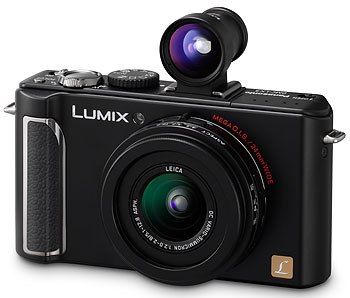The New York Times finally covered a story I’ve been writing about since November 2007; the most important thing for image quality in a digital camera is not megapixels, it’s sensor size. What? You haven’t read anything on the Blork Blog about that? Of course not; I’ve been writing about it on my other blog: My DP1.
I started My DP1 because I was tired of reading all the half-baked, ill informed blog and forum posts about the then-unreleased and highly enigmatic new camera from Sigma, the DP1. The DP1 was announced back in 2006, but its release was delayed time after time, and the rumours and speculations grew and flew off in all directions.
People were excited about the fact that the DP1 promised something entirely new; an SLR-sized image sensor in a small pocket camera. Those of us who know a bit about cameras understood what that meant; super high quality images from something you could tuck in your shirt pocket. A real breakthrough.
The DP1 also promised to be quirky. From it’s unusual Foveon sensor to the fact that it had a fixed focal length 28mm (equivalent) wide angle lens (i.e., no zoom), it was destined to be an odd camera targeting a niche user base.
I was totally in that niche.
So I started the blog to give me a reason to read up on, and write about, the DP1. It was a great exercise, and the My DP1 blog ended up getting four times the traffic of my Monday Morning Photo Blog.
Then, in March, the camera finally came on the market. It was a crushing disappointment. The image quality was there, in spades, but the camera design was far behind the curve. The biggest complaint was its slowness; slow to focus, slow to write images, slow to start up and shut down. Handling is important to me, so in the end I fell out of love with the DP1 and ended up falling in love with my Lumix DMC-LX2 all over again. It has a notoriously noisy small sensor, but it handles like a dream and has an excellent lens. Plus I pretty much use it exclusively for Web stuff, so you never see the noise on scaled down images.
So I’ve paused My DP1, since I no longer have much desire to get a DP1 (especially with its $800 sticker price). David Pogue’s New York Times article sums it up pretty well, although I disagree with him on some points. Watch the video for a quicker overview.
So now what? My LX2 is great, but rumours of an LX3 have been afoot for a while. The web is peppered with forum postings full of “wish lists” for how Lumix could improve the camera. Many of those forum postings were written by me, where I wished for (a) a bigger sensor, (b) better image processing, (c) an optical viewfinder (like the cool clip-on one that you can get for the DP1), no radical changes to body design and handling.
Well guess what? They finally announced the LX3 this week. The new model has everything on my wish list, and more. Plus a whole bunch of stupid features that I can easily ignore. (Face recognition? Give me a break.) The only thing I don’t like is that they’ve made the already wide end of the lens even wider, and shortened the other end. (The LX2 was 28-117 equivalent, and the LX3 is a drastically shortened 24-60).
Well, maybe I can live with that, since I’m a wide angle guy anyway. The new model will hit the shelves at the end of August for about $500 (less than I paid for the LX2). I wish it was sooner, as I dropped my LX2 ten days ago and bent the lens mechanism. Doh!
What is particularly interesting about the LX3 announcement is that the marketing talk around it plays heavily to the rhetoric that was built up around the DP1. In particular it emphasizes the LX3’s larger sensor, which is an overstatement; it’s larger than the LX2’s but significantly smaller than the DP1’s. But there is other DP1-inspired talk as well, including positioning the camera as a portable backup for professionals, and emphasizing its potential for street photography. And that clip-on viewfinder is a total rip-off of the DP1 (but it’s a rip-off I like.) August will be a very long month of waiting. But when I get my new LX3, with its optional (and removable) optical viewfinder, I’m gonna love it!

The Lumix DMC-LX3 with the optional optical viewfinder.
A bit retro, and way cool.
|
|
Update: somehow, I managed to fix my LX2! I poked and prodded and it un-stuck and seems to be working just fine. Yes, you read that right; I fixed my bent lens by applying brute force and now it works. I’m still going to get an LX3 though; but at least I won’t be without camera for August!
Update 2: Mason Resnick has published the results of a test he did comparing similar images from a DSLR and a compact camera, to show the difference between a large sensor and a small sensor. Differences are exaggerated because of the low light/high ISO situation, but you can still get a sense of the difference in general. That said, I think it’s important to remember that image quality can be measured along many dimensions, and that “pixel peeping” is only one way to do so.

 My friend Jeff Fuchs is going to be in town this weekend (September 13) showing photographs and doing a talk to promote his new book “The Ancient Tea Horse Road” (Viking Canada). It’s a book of text and photographs recounting the 6000 kilometer trek through the Himalayas that Jeff lead in 2006, following an ancient tea trading route that is now almost forgotten.
My friend Jeff Fuchs is going to be in town this weekend (September 13) showing photographs and doing a talk to promote his new book “The Ancient Tea Horse Road” (Viking Canada). It’s a book of text and photographs recounting the 6000 kilometer trek through the Himalayas that Jeff lead in 2006, following an ancient tea trading route that is now almost forgotten.







